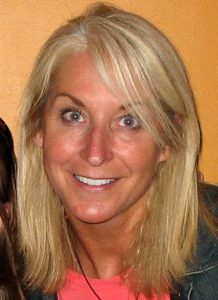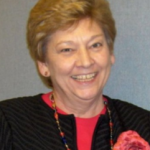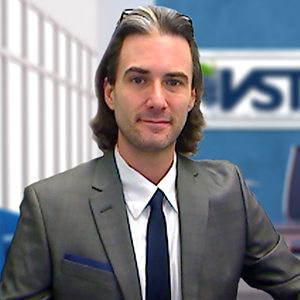 Members of the VSTE Board of Directors will be taking time to periodically share their ideas and passions with the VSTE membership. In this edition, Board member Meg Swecker will talk about the approach used by Roanoke County Public Schools. Last week, Janet Copenhaver shared the strategies from Henry County Public Schools. Janet and Meg have worked together on many projects in technology that benefitted the school divisions in the Commonwealth. Their designs are easily replicated and measurable.
Members of the VSTE Board of Directors will be taking time to periodically share their ideas and passions with the VSTE membership. In this edition, Board member Meg Swecker will talk about the approach used by Roanoke County Public Schools. Last week, Janet Copenhaver shared the strategies from Henry County Public Schools. Janet and Meg have worked together on many projects in technology that benefitted the school divisions in the Commonwealth. Their designs are easily replicated and measurable.
How Two School Divisions Measured a Return on Instruction for their Technology
Part 1: Roanoke County Public Schools
In today's world, most school divisions have chosen a device to use instructionally with their students. After the device is implemented, the real question becomes, how do you prove real outcomes on your investment for instruction? A successful implementation that is instructional driven is much easier to chart outcomes. As you move forward with technology, there are many measures you can use to calculate your Return on Instruction.
MEASURING RETURN ON INSTRUCTION FOR ROANOKE COUNTY SCHOOLS.
For over a decade, RCPS has maintained a robust 1:1 program in grades 9-12. In recent years, the 1:1 program was piloted in in our middle schools. Currently, grades 7-12 are involved in our 1:1 program, and we hope to expand the program in future years.
Feedback from parents, local businesses, and higher Ed institutions indicate that Roanoke County students are better prepared for a life after graduation based on their participation in the 1:1 program. Regular use of Microsoft Office programs and 24/7 learning via Blackboard familiarize our students with skills they will need as the move on to college or into the workforce, and access to a laptop 24/7 deepens learning opportunities that many students, and their families wouldn’t otherwise have. But our instructional practices take students beyond the Virginia standards and support the development of less measurable soft skills, as well. 21st Century skills are a focus of our comprehensive plan and embedded in RCPS instruction.
An example of this is a year-long program that was implemented during our 8thgrade 1:1 pilot. The Be the Change project challenged 8th graders to identity, research, and connect with, agents of change. The students selected change agents based on their own personal interests and passions. Cultural diversity, animals rights, hunger, clean water, special needs, and women’s health, were just some of the topics that students connected with. Based on this description, you might be inclined to think that the parameters of this project were not that different from other good projects for students of this age. But the technology involved, and the way it was used, gave us a much deeper ROI.
Using their personal interests and passions, the students in the Be the Changeproject selected historical change agents to research. They were then added to a group of students who were studying the same historical figure. Each group was comprised of students in their own school, although not necessarily from their own class, as well as students from our neighboring district, Roanoke City Public Schools. The groups met at local public libraries on three occasions throughout the year, but the rest of the work happened digitally. Students collaborated via Office 365 to accomplish their tasks.
Students worked collaboratively to research and presented information about their historical agent of change. The presentations were well done, but the overall impression was that these individuals were somehow above the norm. The students didn’t really connect with the idea that their actions could create positive change in the community.
The next phase of the project was closer to home. Based on the original interest that the students in each group selected, local agents of change were identified. These individuals were working in our own communities to make positive changes. The teachers approached these individuals, explained the project, and asked the local change agents to mentor a group. The response from our local community was overwhelming positive. In our second face to face meeting, groups met their mentors, interviewed them, and learned how regular people from their own communities worked every day to make a difference.
The culminating project for each group involved designing a 30 second PSA based on the information gleaned in the interview with each mentor. The PSA needed to be developed for the mentor’s target audience and had to be easily shared via social media or television. The students used Office Mix to create artifacts that were broadcast ready. Most were unfamiliar with Office Mix, however, and had to learn how to use this tool. Once students understood how to use Office Mix, they created tutorials for their counterparts in Roanoke City. The tutorials were also shared with mentors who expressed interest.
To celebrate the completion of this project, community leaders, mentors, family members, teachers and students met on a Sunday afternoon at a public library. The students shared their PSAs and talked visitors about the changes that were occurring in our community. It was a celebration that inspired all of us. The students had transformed. They knew they could make a difference, and they knew how.
The ROI from this project goes far beyond the development of research skills and the use of software. Students from very different social cultures worked together, based on shared passions. Working together helped them embrace the differences in their cultures and they developed a respect for each other that otherwise might never have existed. They collaborated in a digital workspace and overcame the challenges associated with not working together in a physical environment. They connected with experts in the community and created artifacts that would further positive changes in our area. More than all of this, they students learned that they had a voice and the ability to make a positive change in their own communities and beyond.
Quality instruction has always been a focus for Roanoke County Public schools, and the meaningful integration of technology has played a major role. The Be the Change project is just one example of deeper learning that could not have happened without technology.
Meg Swecker is an ITRT currently working with the Roanoke County School system.






